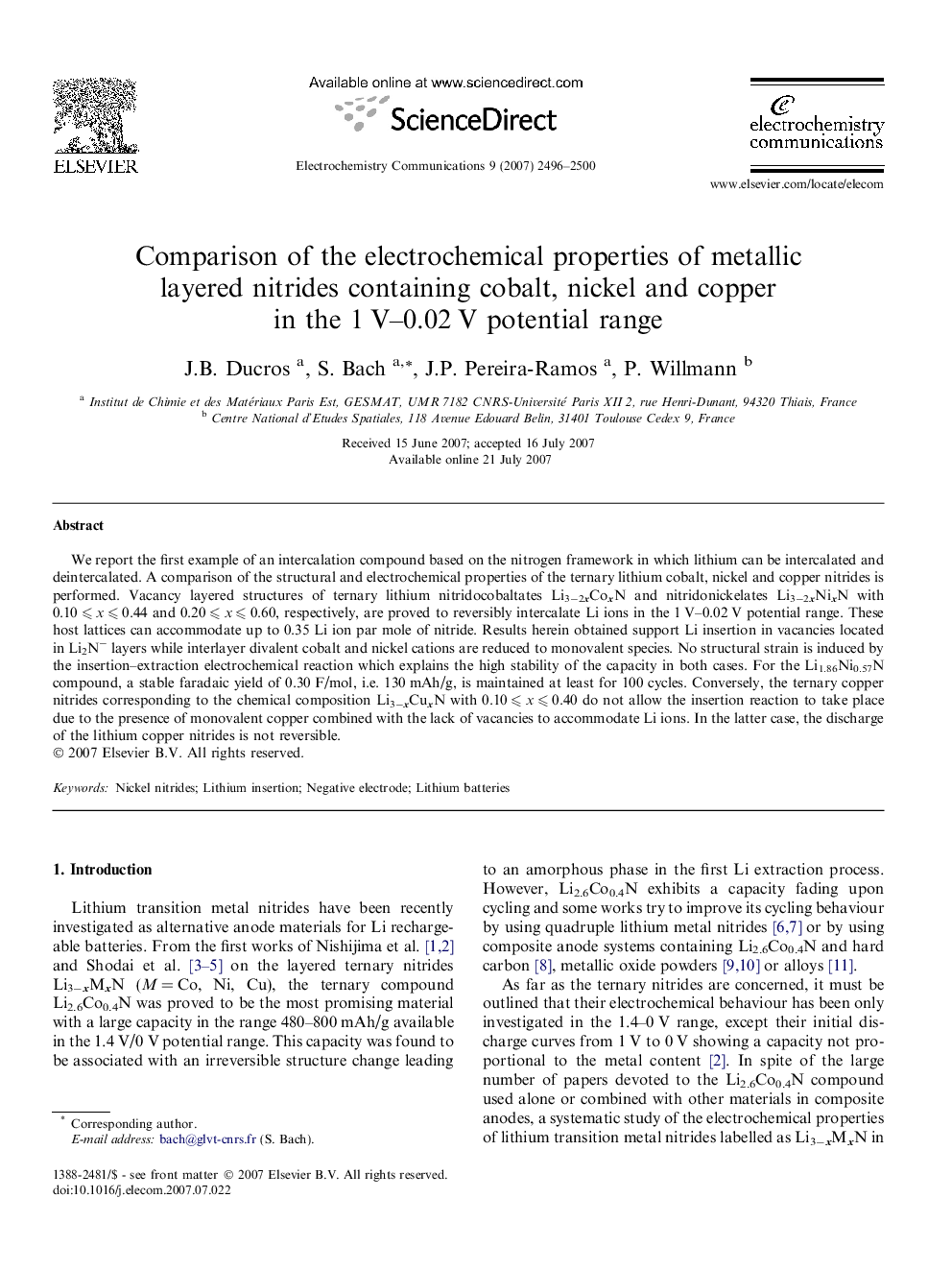| Article ID | Journal | Published Year | Pages | File Type |
|---|---|---|---|---|
| 182471 | Electrochemistry Communications | 2007 | 5 Pages |
We report the first example of an intercalation compound based on the nitrogen framework in which lithium can be intercalated and deintercalated. A comparison of the structural and electrochemical properties of the ternary lithium cobalt, nickel and copper nitrides is performed. Vacancy layered structures of ternary lithium nitridocobaltates Li3−2xCoxN and nitridonickelates Li3−2xNixN with 0.10 ⩽ x ⩽ 0.44 and 0.20 ⩽ x ⩽ 0.60, respectively, are proved to reversibly intercalate Li ions in the 1 V–0.02 V potential range. These host lattices can accommodate up to 0.35 Li ion par mole of nitride. Results herein obtained support Li insertion in vacancies located in Li2N− layers while interlayer divalent cobalt and nickel cations are reduced to monovalent species. No structural strain is induced by the insertion–extraction electrochemical reaction which explains the high stability of the capacity in both cases. For the Li1.86Ni0.57N compound, a stable faradaic yield of 0.30 F/mol, i.e. 130 mAh/g, is maintained at least for 100 cycles. Conversely, the ternary copper nitrides corresponding to the chemical composition Li3−xCuxN with 0.10 ⩽ x ⩽ 0.40 do not allow the insertion reaction to take place due to the presence of monovalent copper combined with the lack of vacancies to accommodate Li ions. In the latter case, the discharge of the lithium copper nitrides is not reversible.
